
Soft openings offer restaurants a unique opportunity to test their menu, operations and service quality in a low-pressure environment before opening to the general public. In this post, we’re going to walk you through how to get value from a restaurant soft opening and position your business for success right from the beginning.
Read on to learn:
- What is a soft opening for a restaurant?
- Why have a restaurant soft opening?
- Are there any downsides or risks?
- When to host a restaurant soft opening
- Do you charge at a soft opening?
- How to prepare for a soft opening
- Restaurant soft opening checklist
- How to get the most value from a restaurant soft opening
Get your restaurant up and running fast
With Lightspeed Restaurant POS, you can get your front of house and back of house up and running in just moments. Create custom floor plans, build customizable menus, take payments and manage your whole business from one intuitive platform.
What is a restaurant soft opening?
A soft opening for a restaurant is a limited trial period that puts the restaurant’s operations and menu to the test on a small group of select guests, allowing the restaurant to gather feedback and make improvements, all before officially opening its doors to the public.
Depending on the concept, brand and budget, the soft opening of a restaurant could last anywhere from a few days to a few weeks leading up to the restaurant’s grand opening. It could also be a one-night-only event, more closely resembling a grand opening, but with a controlled group of guests.
By calling this span of time a soft opening, restaurants communicate to customers that they’re still working out the kinks in their operations, and that they’re actively seeking feedback on ways they can improve.
Why have a soft opening for your restaurant?
A soft opening serves as a trial run before you officially open your doors to the public. It’s basically the dress rehearsal for your grand opening and then day-to-day operations.
But it’s not just something you do for practice—restaurant soft openings have several objectives (and offer numerous benefits), including:
- create a buzz
- predict demand
- create future revenue
- perfect your menu
- work out any kinks
Create a buzz
Having a soft opening can help your restaurant generate attention before it is officially open.
The level of publicity you will get will depend on how much attention you draw to your soft opening. If you decide to throw a launch party and invite media and influencers, you’ll get more buzz (but also more pressure) than if you put up a post on Instagram saying that your doors are open but that you’re still working out the kinks in the business.
Either way, it takes time for new businesses to get noticed, so generating buzz through word-of-mouth, social media or traditional media will benefit your restaurant.
Predict demand
A soft opening can help you predict demand at your restaurant. For example, a prolonged soft launch over a period of weeks can help you anticipate what times of day will be the busiest for your restaurant.
Perhaps during your weeklong soft opening, you notice that your lunch rush and after-work happy hour is incredibly popular, but the place is empty by 10 PM. With this insight, you may decide to adjust your hours to save on operational costs.
You will also find out quickly which menu items are the most popular with your diners, which can help you optimize your menu and manage sitting inventory, as well as help your service staff make better recommendations.
Create future revenue
A soft launch will give you an opportunity to generate future revenue. When you hand out coupons or get customers to sign up for your loyalty program during the trial run, you get the chance to turn early guests into longtime regulars.
Consider giving out $15 worth of coupons to customers who give you feedback during your soft launch. However, each coupon is valid for $5 per person, per visit. By getting customers to come back several times, you’re getting them into the habit of visiting your restaurant on a regular basis.
Perfect your menu
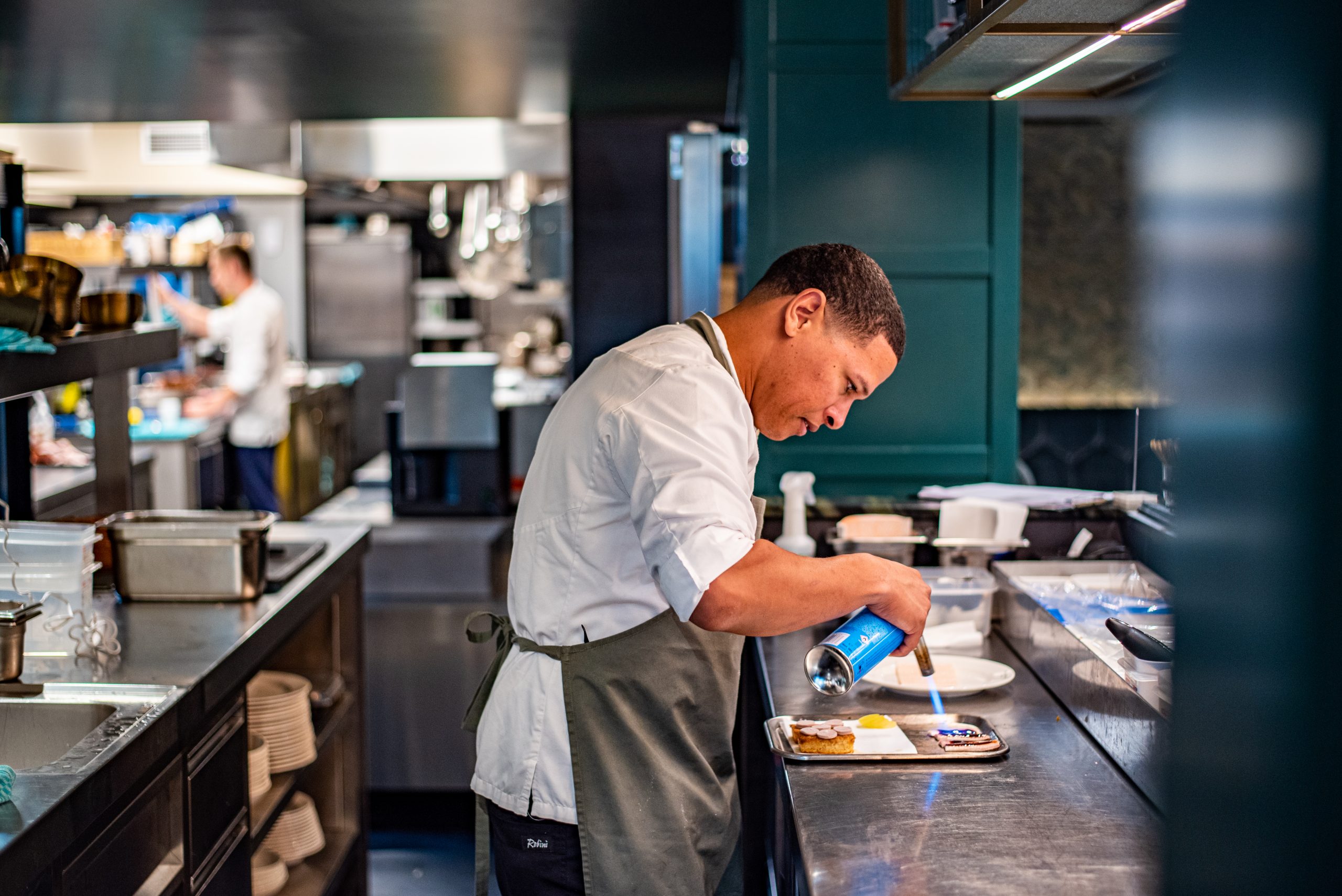
Developing a restaurant menu and recipes is one thing. Executing a menu when you have a dining room packed with hungry diners is another.
A soft opening is a perfect opportunity to see how long things take to make, which items are the most popular, which items are the least popular, which are being sent back, which are being ordered with a bunch or mods or substitutions, etc.
Use this data to adjust your menu or recipes before your grand opening.
Work out the kinks
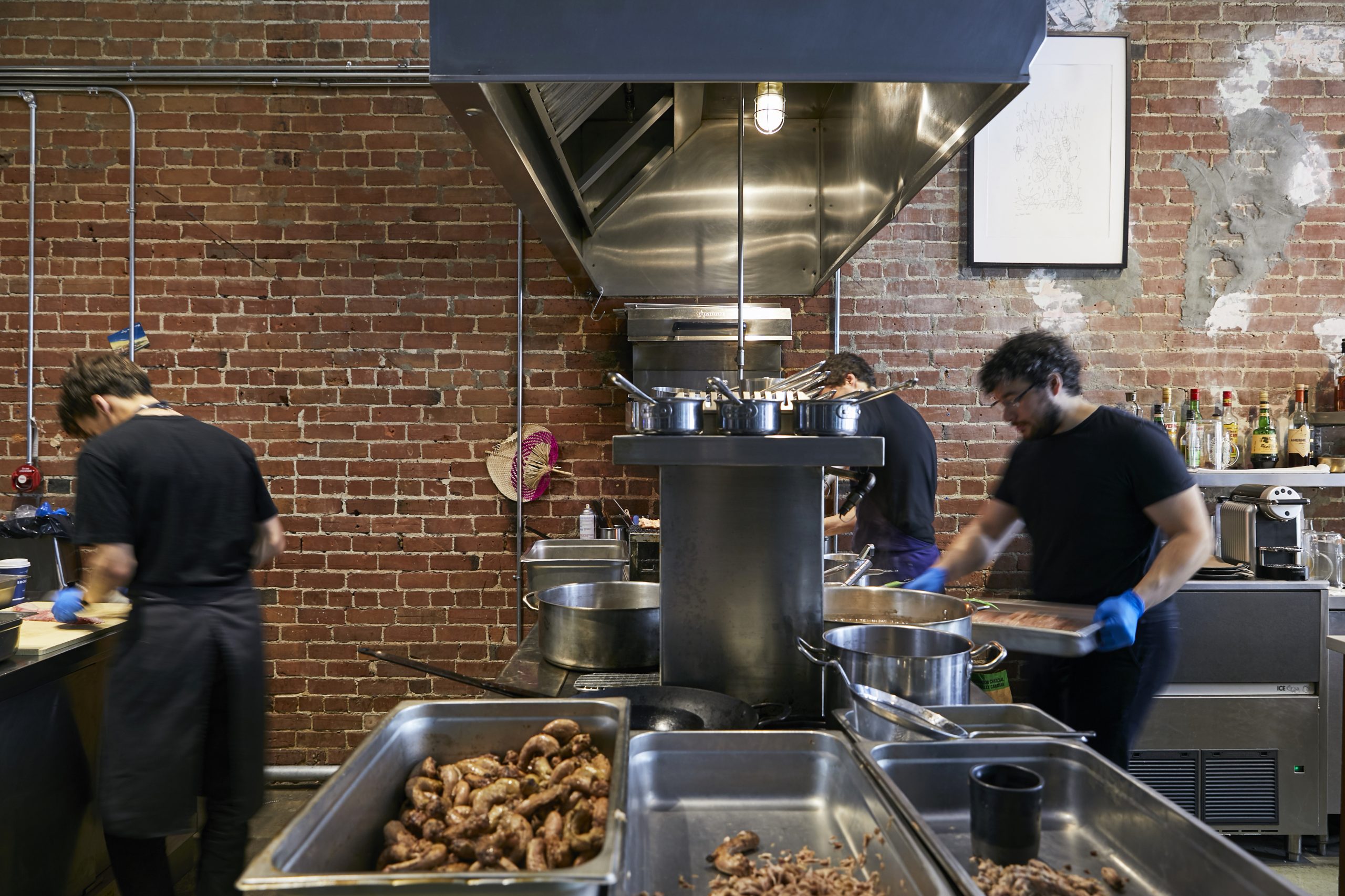
Having a soft opening for your restaurant is a great way to find out what works and what doesn’t before you draw big crowds. During the soft opening, you’ll be able to see what things you need to fine-tune before you open. You can learn valuable things, such as:
- Which employees need more training and for what (menu knowledge, customer service, making recommendations, using your restaurant POS, upselling and cross-selling, etc.). Of course, you can’t be everywhere at once, so you’ll want to back up your initial impressions with hard data.
- What customers think about your menu. Now is the time to gather feedback and consider tweaking the menu for maximum customer satisfaction. If you really want to be a restaurant soft opening pro, make it clear to your staff and guests that you are seeking honest, no-holds-barred feedback. Make it easy for guests to provide their feedback, preferably in various ways, such as comment cards, a follow-up survey, etc.
- What table configuration works best for your space. You may need to take away or add more tables. If you do, remember to update the floor plan on your point of sale. It couldn’t be easier, or faster, in Lightspeed Restaurant. Add or remove a table from your floor plan in one click, or drag and drop tables to move them around.
Learn more about configuring floor plans and tables in Lightspeed Restaurant.
A soft opening can help you learn a lot about your new restaurant before you have to deal with the pressure of crowds and perfection.
Are there any downsides to hosting a soft opening?
As with anything in life, hosting a restaurant soft opening comes with some risks and potential downsides. Here are a few soft opening cons to be aware of:
- Creates a sense of urgency to open: A soft opening can create a sense of urgency, potentially rushing the final stages of preparation. Under the gun, you or your staff might be tempted to cut corners, or you may overlook critical details in an effort to meet the deadline.
- Costs money and resources: Naturally, running a soft opening costs money and resources, from food and staff salaries to marketing and operational expenses. This can be a financial strain, especially for new restaurants operating on tight budgets. The need to manage additional logistics can also divert attention from other important tasks.
- Reveals your ideas to competitors: During a soft opening, your restaurant’s concept, menu and operations are exposed to a small but potentially influential audience, which may include competitors. And because people can be terrible, a competitor may copy your innovative ideas before you have a chance to fully establish your brand in the market.
- Potential for negative word-of-mouth: If your soft opening doesn’t go as planned, it could leave a negative first impression with your guests. If your guests share their bad experience with other people, it could discourage those people from giving your restaurant a try. A negative first impression can have lasting repercussions on your restaurant’s reputation.
- Potentially low-quality feedback: The feedback you get from soft opening your restaurant can sometimes be low-quality or not particularly constructive. Guests invited to a soft opening might be hesitant to provide honest criticism, or they might focus on minor issues that don’t significantly impact the overall guest experience. This can result in feedback that is less actionable.
When should you host a soft launch?
So, you’ve decided the benefits of a soft opening outweigh the potential cons. Now you need to know how to do a soft opening for a restaurant.
Your soft launch should take place, ideally, one or two weeks before your grand opening. This will give you enough time to address any issues that come up during the soft launch while maintaining the momentum and excitement leading up to your official opening. Having a short gap between the soft launch and grand opening helps to ensure you don’t lose your customers’ attention, and that you can leverage positive word-of-mouth generated during the soft opening into a strong start for your business.
A couple of other things to consider when choosing the date for your soft launch are the day of the week and what’s going on in your city. For example, planning a soft launch at the same time as a holiday or hugely popular event might prevent some (or many) of your guests from attending. Do your research and find out if there are any external factors that could affect your soft opening’s success before you pick a firm date, and before making a soft opening announcement for your restaurant.
Do you charge at a soft opening?
To charge, or not to charge, that is the question. You effectively have three pricing options for your soft opening: free, discounted or full-price.
Offering free or complimentary meals during a soft opening can be an excellent way to attract a diverse group of guests, including local influencers and media. This will almost certainly help you generate positive word-of-mouth and build excitement for your grand opening, but it’s also prohibitively expensive.
Many restaurants choose to charge a reduced rate for meals, which helps attract customers while offsetting food and overhead costs. Charging at least something for food during your soft launch also provides a more realistic simulation of regular operations, and you’ll definitely want your front of house (FOH) staff to have the billing and payments process down. Charging guests can also lead to more honest feedback, as paying customers are likely to be more critical and attentive to details.
If you decide to provide free meals, consider offering a limited menu to manage your costs and simplify operations.
How to prepare for your restaurant soft opening
Preparing for a soft restaurant opening is a critical step in ensuring the success of the event. While there’s no one-size-fits-all strategy, there are some key elements you should focus on to ensure a smooth soft open that achieves its objectives.
First, the guest list. You want to invite a small, diverse group of guests that includes friends, family, local influencers and industry professionals. This enables you to gather varied feedback on the menu, service and overall experience.
Ensure your staff is well-trained and familiar with the menu, as their performance during the soft opening can significantly impact the impression your restaurant makes. Whoever said “there’s no such thing as bad publicity”—it was P.T. Barnum—obviously never had shares in Subway, Chipotle or Chick-fil-A.
Make sure you’ve worked out all the logistics so that the kitchen and front of house (FOH) operations run seamlessly. This is the time to test your menu, point of sale configuration, service flow and kitchen operations under real conditions (but with a safety net). Conduct multiple rehearsals prior to the soft opening, paying attention to everything from waiting times to ambience.
How Tuck Shop saves time and maximizes covers
Since switching to Lightspeed Restaurant, this beloved Montreal bistro turns tables faster, spends more time with guests and has the data they need to make smart decisions to grow their business.
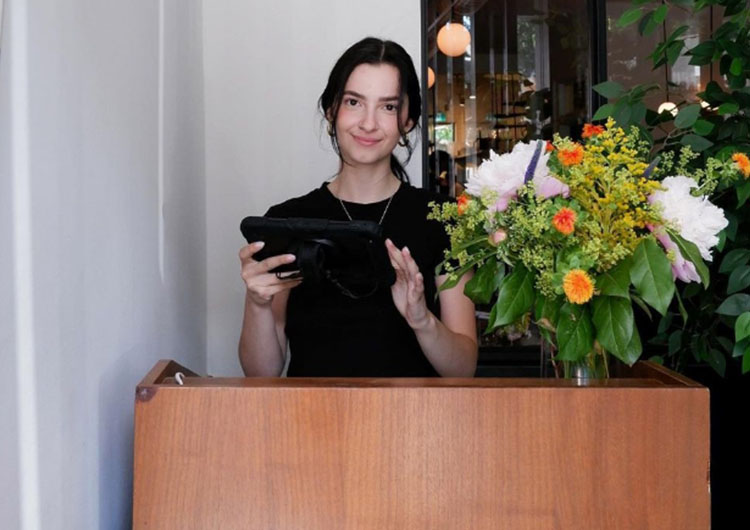
Restaurant soft opening checklist
We know that opening a restaurant is a lot of work, and there are a million tasks to juggle. So, in the interest of simplifying your life—because that’s what Lightspeed is all about—here’s a checklist of things to do to get the most out of your restaurant soft opening.
- Choose your menu
- Choose your pricing strategy
- Prep your staff
- Choose a date
- Build your guest list
- Determine guest capacity and timing
- Send your restaurant soft opening invitations
Choose your soft opening menu
For a soft opening, you can choose between offering a limited menu, a full menu or a specially curated tasting menu. A limited menu focuses on a select number of key dishes, allowing for better quality control and efficient feedback collection. A full menu provides a comprehensive preview of your restaurant’s offerings, though it may be more challenging to manage.
Alternatively, a tasting menu featuring small portions of various items can give guests a broad sampling of your culinary style while keeping operations simple and streamlined for your back and front of house. Whatever you decide, make sure you have enough inventory to last you through your trial period.
Choose your pricing strategy
As we discussed above, depending on your brand and budget, you may offer free, discounted or full-priced meals during your soft open—or a combination of these.
It’s important to remember that your soft opening prices will serve as an anchor for prices after your restaurant grand opening. Because while customers understand that prices may be adjusted slightly when you “officially” open, they could be disappointed or annoyed if they come back to your restaurant and the prices have doubled.
To help you make smart pricing decisions from the start, it’s a good idea to look at your food cost percentage and your cost of goods sold (COGS). For example, let’s say your regular menu will have angus beef burgers and lobster rolls. Go into your POS and compare what it costs you to make a burger versus a lobster roll.
In Lightspeed Restaurant, you can find the cost price by clicking on the item > Inventory tab.
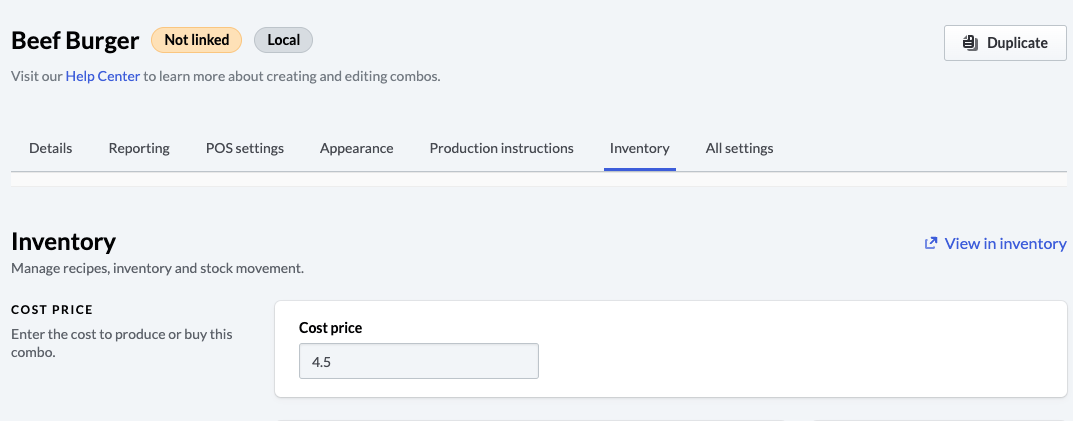
So let’s say it costs you $4.50 to produce the burger and $8.50 to produce the lobster roll. Using this information, you can make an informed decision about what to offer and/or what to charge customers during your soft opening.
Prep your staff
Make sure that your staff is ready for the soft opening by training them on recipes, customer service and how to use tech like your restaurant’s POS and payment processing systems.
Keep an eye on staff performance during the soft launch. Ask staff for feedback on how things went. Were there any bottlenecks or awkward workflows that slowed them down? Incorporate this feedback to improve your workflows.
If your restaurant POS offers advanced insights into staff performance, you’ll definitely want to take advantage of this data long after your soft opening has ended. With metrics like average turn time, average tip percentage, sales by category and way more, you’ll be able to identify your top performers and skills gaps by individual employee. This will help you laser focus training and coaching so you can build an all-star team.
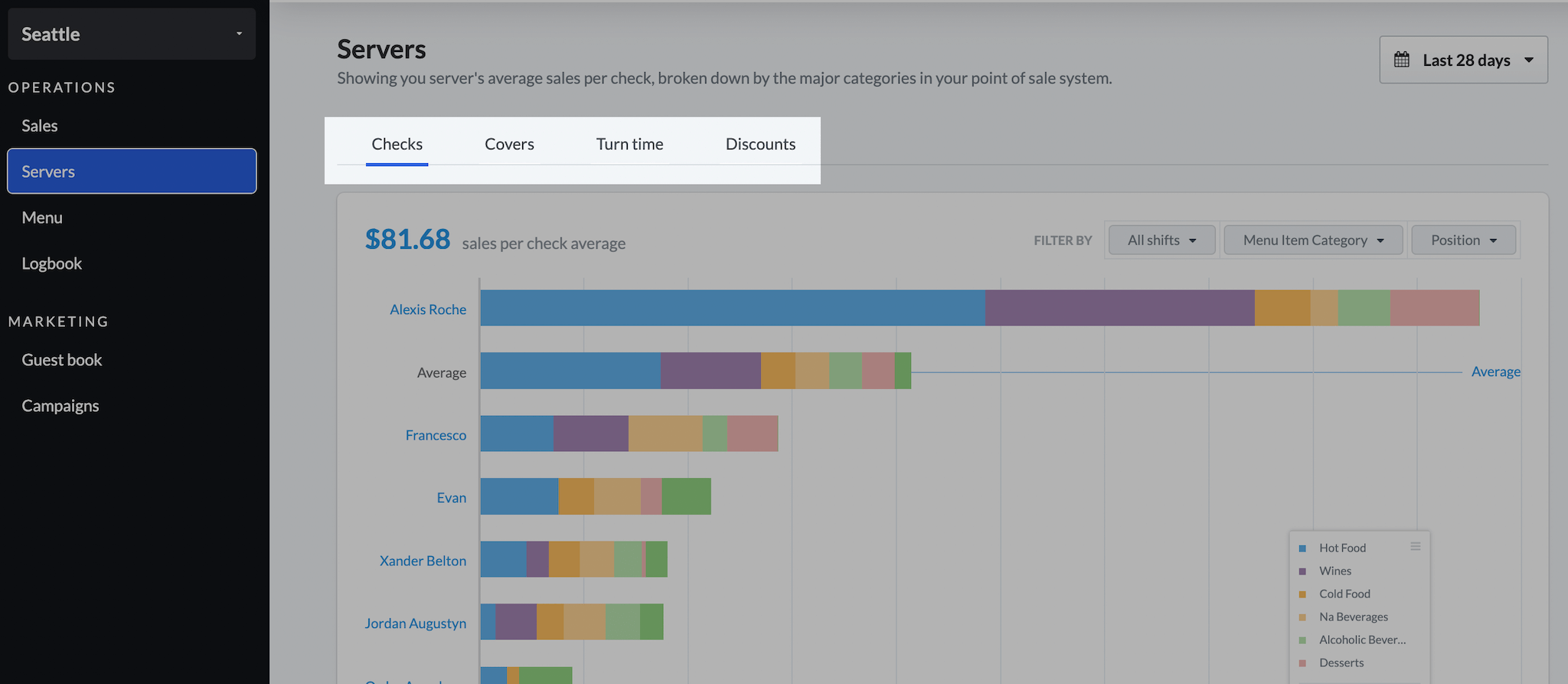
Learn more about Lightspeed Advanced Insights.
Choose a date
Choosing the date for your soft opening can be intimidating—if only because it’s your first official “deadline” as your restaurant moves from concept to execution.
We recommend picking a date for your grand opening first, giving yourself a good amount of time to work out all the kinks, and then planning to do your soft opening between one and three weeks beforehand. This time frame should give you enough time to notice and correct potential issues or mistakes.
Build your guest list
Who you invite to your soft opening can have a significant impact on your restaurant’s success, at least at the outset. It’s a good idea to invite a carefully selected group of guests that includes people you know, prominent community members, other industry professionals and local media/influencers. This diverse mix ensures you receive honest and constructive feedback while you generate publicity.
Invite people you know
Inviting friends and family to your restaurant soft opening can help provide a supportive yet honest environment for testing your operations. Their feedback is valuable for identifying areas of improvement in a low-pressure setting. Familiar faces will also boost staff confidence and help create a welcoming atmosphere that puts all of your guests at ease.
Invite key members of the community
Inviting select members of the community to your soft open—such as local business owners or members of your local BIA—can help you create a strong first impression and build healthy professional relationships in the community. (You’d be surprised how much mutually beneficial partnerships and a supportive local network can impact your restaurant’s long-term success.)
Plus, these guests are less likely to sugarcoat their feedback than your friends and family, so you’ll get more honest feedback you can use to refine your processes and menu.
Invite local media and influencers
Inviting local media and influencers to your restaurant soft opening is a strategic move that will help you generate more buzz and build anticipation ahead of your grand opening. These tastemakers can provide immediate exposure through social media posts, blogs and news articles, helping you reach a wider audience, faster.
Determine soft launch guest capacity and timing
It can be tricky to decide how many people you should invite to your soft opening. On the one hand, you want to maximize publicity. But on the other hand, inviting more people than your kitchen or floor staff can handle can hurt your food and service quality.
Aim to invite a manageable number of guests, taking into consideration your seating capacity, experience and efficiency of your kitchen and service staff and the nature of the event. It’s a good idea to build in a margin for error.
Staggering guests is a common soft opening strategy, allowing restaurants to get the most out of the event by accommodating more people—who’ll tell other people—and running multiple trials in short succession, so employees get more practice and improve with every seating.
So, let’s say you’ve built a guest list of 100 people, but 100 people is risky for a single seating. You could have three 2-hour time slots: 5-7 PM, 7-9 PM and 9-11 PM, each accommodating 30-35 guests. Using this staggered approach, you can ensure a steady but controlled stream of diners, allowing your staff to provide consistent service and maintain a high standard of food quality.
Once you’ve completed your guest list, it’s time for your restaurant soft opening invitations.
Send your restaurant soft opening invitations
If you’ve decided to go with a one-night only event, you’ll have to send out your restaurant soft opening invitations. We recommend using digital invitations to cut down on costs (and save a tree). You can also usually see who opened email invites, which is a good tool to use when you want to follow up with invitees for an RSVP.
Here’s the key information you need to include in your restaurant soft opening invitation:
- location, date, time
- RSVP instructions
- a press release (or a link to one)
- a link to your restaurant’s website
- links to your restaurant’s website and social media accounts
- relevant social hashtags
| Need some inspiration? |
| Browse these restaurant soft opening invitations on Pinterest. |
| Check out these restaurant soft opening invitation designs on Etsy. |
| View restaurant soft opening invitations & invitation templates on Zazzle. |
How to get the most value from a restaurant soft opening
So you’ve done all you can to prepare for your soft opening. All that’s left to do is open your doors and learn from what happens next. Here are three ways to maximize the value of your soft opening.
1. Gather feedback
Your restaurant’s soft opening is a unique learning opportunity for both management and staff. To encourage guests to provide feedback, you may want to offer a coupon or raffle away a prize in exchange for their feedback on:
- food quality
- menu options and variety
- value for money
- ambiance
- service
2. Perfect your service
Use the soft opening to perfect your customer service. Observe staff closely to see who needs more training, what things need to be sped up, what cadence of service your customers want, etc. In short, actually listen to the feedback you’ve asked for!
3. Build your marketing list
Get your soft opening visitors to opt-in to your marketing communications. When you can send them coupons via email or updates about new offerings via SMS, you’ll be more likely to entice them to come back. You may want to offer customers an incentive, like a coupon or a free side or beverage, to opt-in to your marketing list.
Key takeaways
A restaurant soft opening is a valuable opportunity to test and refine operations before opening to the public. Use the opportunity to:
- Identify and correct operational issues or staff training gaps.
- Get insights into your menu, staff performance, peak times, etc.
- Generate excitement through word-of-mouth and social media.
- Start building a loyal customer base and marketing list.
To get the most value out of your soft opening:
- Carefully choose the date, time, duration and pricing strategy.
- Review food cost prices and COGS before building your soft opening menu.
- Invite a diverse group of guests to get better feedback and maximize reach.
- Have mechanisms in place to collect feedback from guests.
- Offer incentives to early guests to keep them coming back and engaging with your brand.
To mitigate potential risks and downsides:
- Avoid rushing final preparations due to the urgency of the soft opening.
- Keep a close eye on your budget and resources during planning all the way through execution.
By focusing on these key areas, you can maximize the benefits of your soft opening and set the stage for a successful grand opening.
Want to find out how the right restaurant technology can set your restaurant up for long-term success? Find out what Lightspeed Restaurant can do for you. Talk to a POS expert today.
FAQs
What is a soft opening for a restaurant?
A soft opening is a trial run for a new restaurant before its official grand opening. It involves inviting a limited number of guests to experience the restaurant’s offerings and provide feedback, allowing the staff to refine operations and address any issues in a low-pressure environment.
What’s the difference between a soft opening vs grand opening?
A soft opening is an invitation-only event focused on testing and improving the restaurant’s service and menu, while a grand opening is the official public launch aimed at generating maximum publicity and attracting a large number of customers with marketing and promotional events.
What should you have on a soft opening menu?
Whether you choose to offer a full or limited menu during your soft opening, your soft opening menu should be representative of your offering, featuring key dishes that showcase the culinary style and specialties. This approach allows for better quality control and efficient feedback collection, helping to identify and refine the most popular items.
Do you tip at a restaurant soft opening?
Wondering about restaurant soft opening etiquette—specifically, tipping etiquette? Tipping at a restaurant soft opening is generally encouraged, as the service was provided even if the food was complementary. Guests should tip based on the quality of service they received, just as they would during regular service.
Can anyone go to a restaurant soft opening?
Typically, not everyone can attend a restaurant’s soft opening, as it’s usually an invitation-only event. The guest list is curated to include people who can provide valuable feedback and help create initial buzz, such as friends, family, industry professionals, local business owners, members of the media and influencers.

News you care about. Tips you can use.
Everything your business needs to grow, delivered straight to your inbox.





